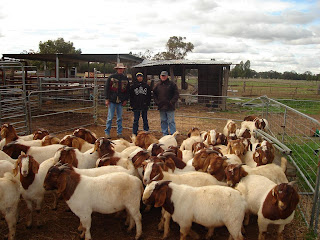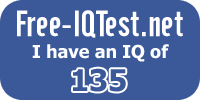
This standard is a guide to breeders and sets down guidelines to encourage the breeding of an improved Boer Goat with increased economic value to commercial goat meat producers. When evaluating Boer goats, productive traits such as conformation, mobility and good structure should always receive priority over aesthetic traits. See this for your easy reference.
CONFORMATION
HEAD:
A strong, broad head showing character and a quiet disposition. Large brown almond shaped hooded eyes. A strong curved roman nose with flared and wide nostrils with the tip of the nose in line with the lower lip and chin. A strong curved lower jaw rising to meet the upper jaw is ideal. Up to six tooth must show a 100% fit and at 8 tooth may show 6mm protrusion. Permanent teeth must cut in the correct anatomical place. A prominently curved forehead linking up with the curve of nose and horns. Horns should be strong, round, solid and show colour, be of moderate length and placed moderately apart with a gradual backward curve. Ears should be long, broad, smooth, set in line with the eye and hang downwards from the head.
Characteristic Faults:
Concave forehead, straight, flat or wild horns, pointed jaws, ears folded (lengthwise), stiff protruding ears, short ears, overshot or undershot jaw.
A neck of moderate length in proportion to the length of the body. In does, the neck should come out deep from the chest blending smoothly with the shoulders, be wide in its attachment and rising gracefully to the throatlatch which shows refinement in the female. In males, the neck should be thicker and show skin folds as a sign of masculinity. The chest should be broad with a deep brisket. The shoulder should be well muscled, in proportion to the body and be well fitted to the withers. The withers should be broad and well-fitted (not sharp).
Characteristic Faults:
Very long, thin, or short neck or too loose shoulders.
BARREL
The Barrel should be long, broad and deep. The ribs must be well sprung and the loins well muscled. The goat should have a broad, fairly straight back and must not be pinched behind the shoulders. A small dip behind the shoulders is acceptable.
Characteristic Faults:
Concave back, slab-sided, cylindrical or pinched behind the shoulder.
The pelvis must be large broad and deep with good length from hip to pin. Well muscled through the rump twist and inner thighs with length through the stitch particularly in bucks. The rump should be slightly sloped. The tail should be straight at the dock and be able to move freely.
Characteristic Faults:
Narrow hips or thurl, rump that slopes too much, wry tail, short from hip to pin, poor muscling particularly in males, short stitch/poor inner thigh development.
LEGS
The legs should be of medium length and in proportion to the depth of the body. The upper leg should be long in proportion to the cannon bone and well muscled. The 
Characteristic Faults:
Knock knees, bandy legs, cow or sickle hocks, post legged. Thin or fleshy legs. Weak pasterns and hooves pointing outwards or inwards or too light in colour.
SKIN AND COVERING
A loose supple skin is essential. Eyelids and hairless parts must be pigmented. All hairless skin (eg. under the tail, round the eyelids and mouth) should have a minimum of 75% pigmentation. Pigmentation may range from light through to dark. Hair should be short, dense and glossy. A limited amount of cashmere will be tolerated during winter months.
Characteristic Faults:
Covering too long and coarse or sparse, fine and open. Pigmentation less than 75%.
SEXUAL ORGANS
Does: Well-formed udder firmly attached with no more than two separate teats on a side.
Bucks: Two reasonably large, well-formed, healthy and equal sized testes in one scrotum. A scrotum with no larger split than 5cm is permissible. The scrotum must be at least 25cm in circumference at maturity.
Characteristic Faults:
Any teat variation of more than two separate teats per side, calabash/bottle teats or pendulous udder. Small testes; a scrotum with more than a 5cm split; scrotal sack with a circumference of less than 25cm at maturity.
SIZE
The ideal is a medium sized, heavy goat with maximum meat production. A desirable relationship between length of leg and depth of body should be achieved. Kids tend to be longer in the leg.
Characteristic Faults:
Goats too large or too small (pony type)
COLOURING
The Boer goat is a white goat with a fully pigmented red head and white blaze. A full red head is permissible. Uniform shading between light and dark is permissible. The minimum requirement for a stud animal is a red patch of at least 10cm in diameter on both sides of the head, ears excluded. Both ears should have at least 75% red colouring and 75% pigmentation.The following is permissible:
Head, Neck and Forequarters: A total red colouring is permissible not further than the shoulder blade and on the shoulder not lower than the chest junction.
Barrel, Hindquarters and Belly: Only one patch not exceeding 10cm in diameter is permissible.
Legs: The term ‘legs’ is taken to mean that portion below an imaginary line formed by the chest and the underline. One patch or a number of patches that do not exceed a total area of 5cm in diameter.
Tail: The tail may be red, but the red colour may not continue onto the body for more than 2.5cm.
Red Hair and Covering: Very few red hairs in the white of the coat is permissible from the age of two tooth.
GENERAL APPEARANCE AND TYPE
FERTILITY
A doe must have kidded by 2 years of age.
DISQUALIFICATIONS
Animals that display any of the following disqualification should not be used for breeding and may not be exhibited:
• Blue eyes.
• Wry, twisted or crooked face or mouth. Parrot mouth.
• Undescended, single or divided testes, monorchid or cryptorchid
PROVISION:
Where an animal is highly exceptional in its functional traits and displays an aesthetic fault its exceptional traits should be recognized.




No comments:
Post a Comment